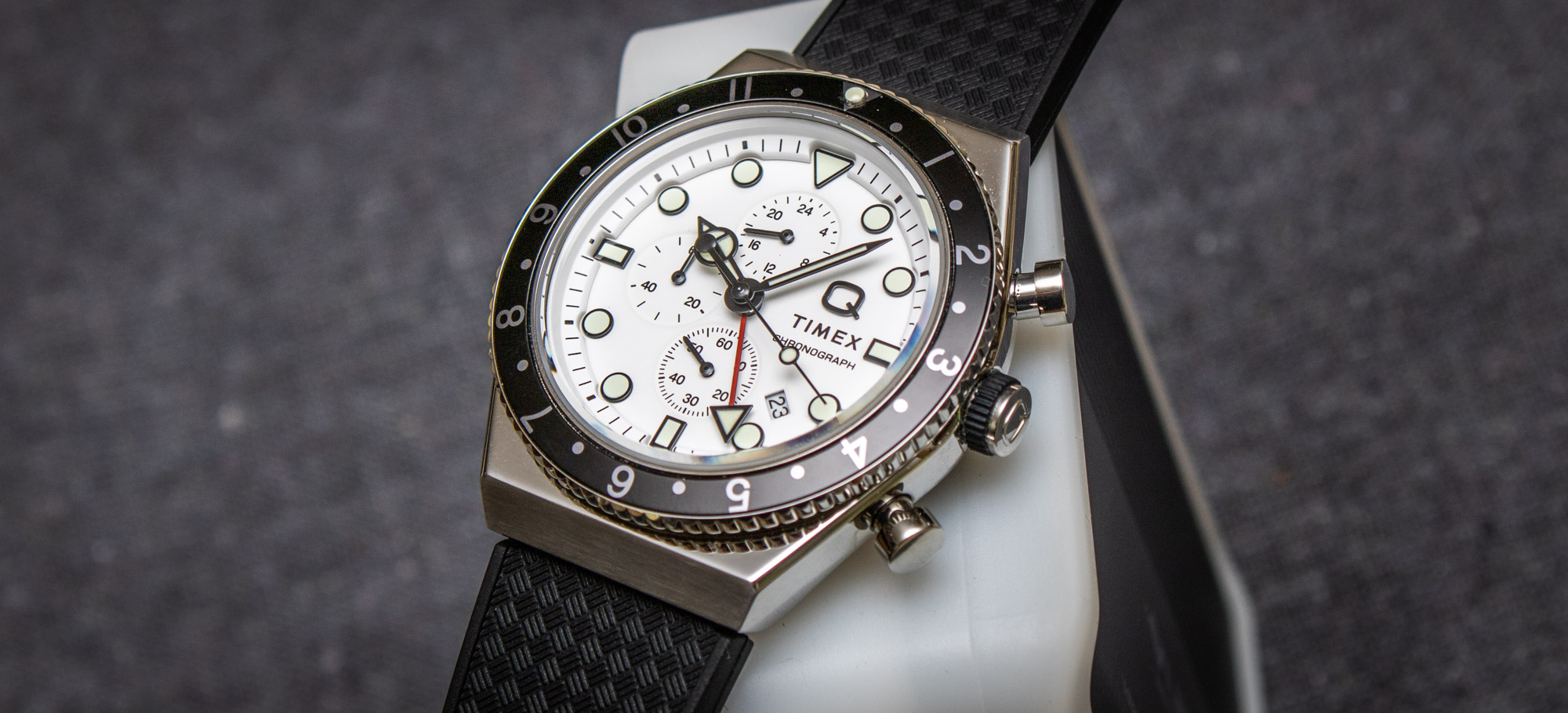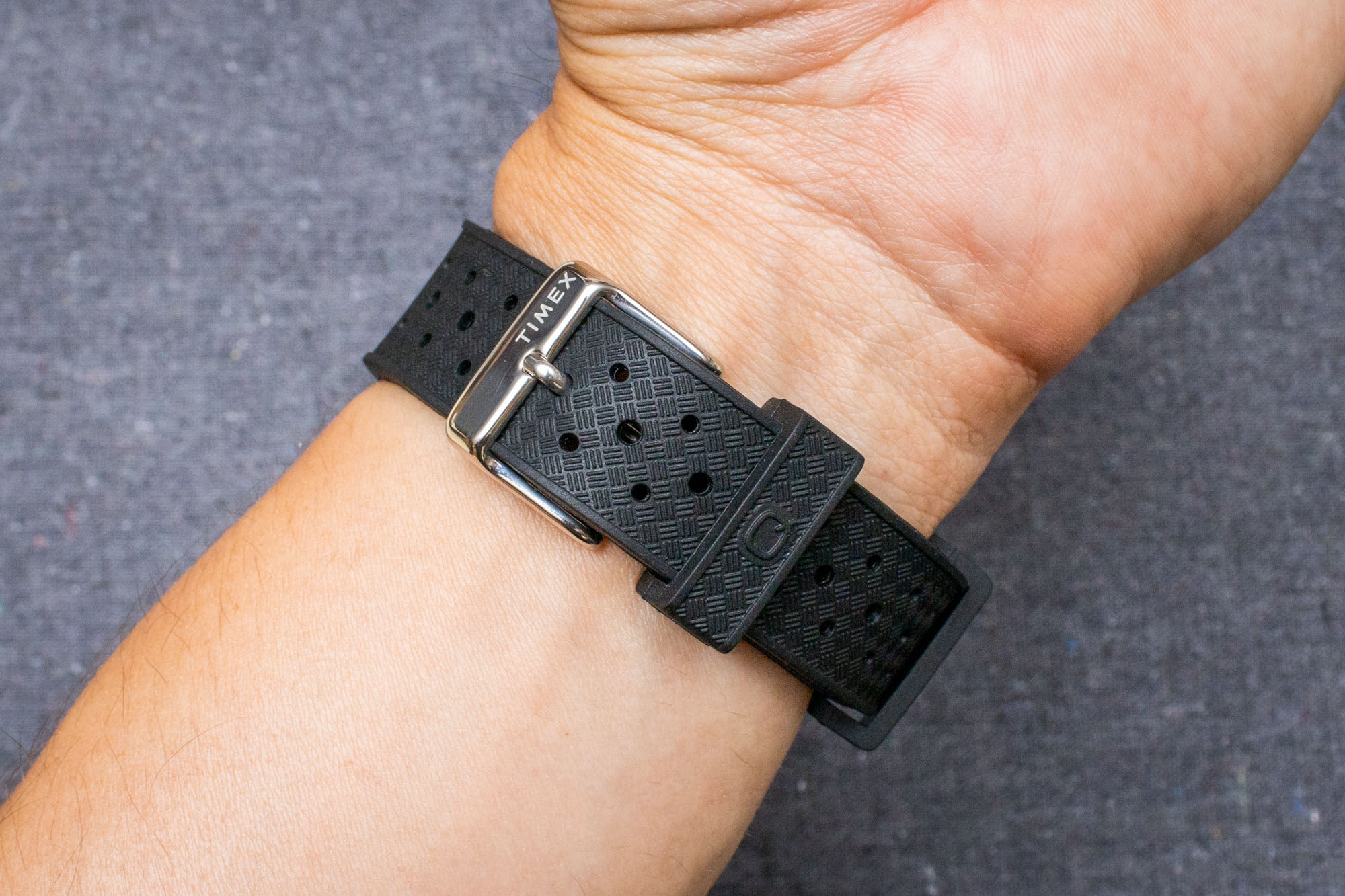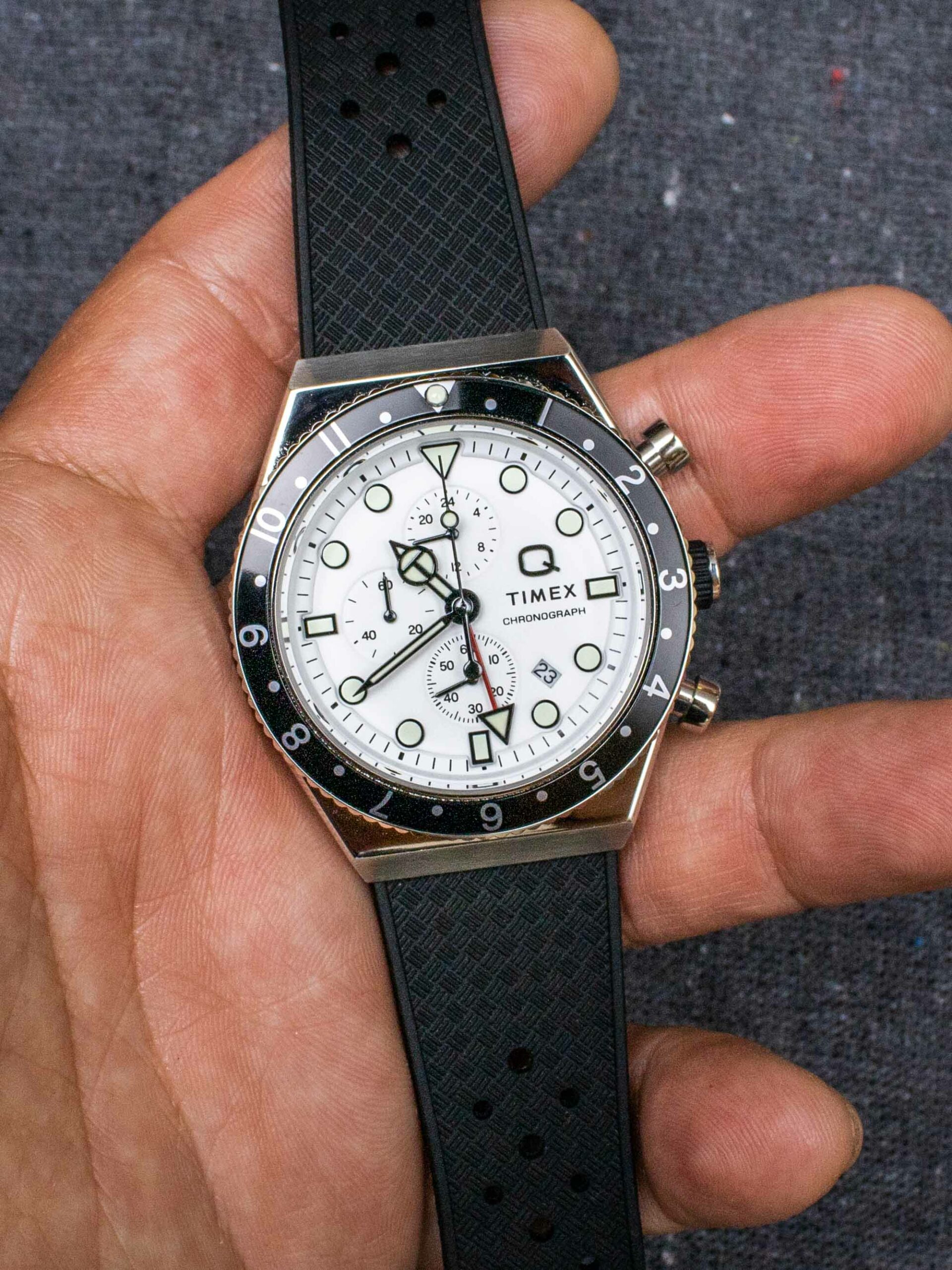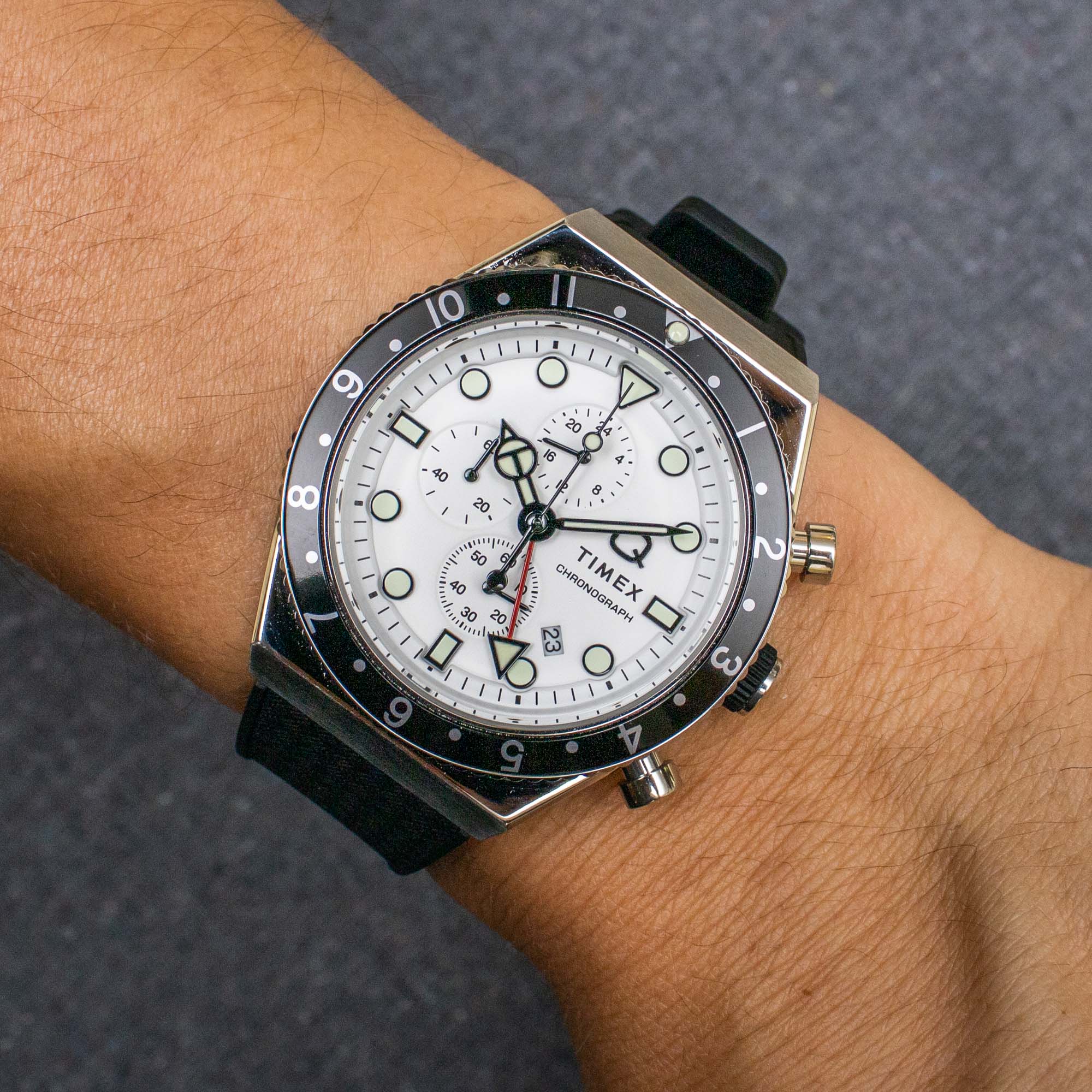
One of the more promising recent releases from Timex for 2023 has been the Q Timex Three Time Zone Chronograph, which (as its name suggests), is a new variant from the popular Q Series that pairs a quartz chronograph with triple time zone capabilities. When the watch was initially announced in early April of this year, the overall package looked incredibly promising, although (as is often the case with Timex releases), pre-production details were a bit sparse, and when I wrote the initial first-look article back when the model was announced, a couple of key pieces of information remained unconfirmed. Once you get into the realm of multiple different hour hands and their independent adjustability, a proper hands-on assessment is often needed in order to fully flush out the finer points of a watch’s functionality, and given the budget-friendly nature of this particular model, the Q Timex Three Time Zone Chronograph was definitely one that I was curious to see in the metal.

Crafted from stainless steel, the case of the Q Timex Three Time Zone Chronograph measures 40mm in diameter by 11.5mm thick, with 18mm lugs and an overall lug-to-lug profile of 46mm. With that in mind, the on-paper 11.5mm case thickness doesn’t include the crystal, which is a flat piece of mineral glass with a beveled edge that slightly sticks up above the rim of the bezel. Once you factor in the crystal, the overall thickness of the watch comes up to 12mm, and if you count in the additional height of the small battery hatch that sits within the solid screw-on caseback, you are really looking at an overall thickness of approximately 12.7mm. That said, the relatively small diameter of the battery hatch means that its additional size won’t significantly impact the perceived thickness of the watch, so the Q Timex Three Time Zone Chronograph should realistically be viewed as a timepiece with a height of 12mm. While the overall profile of the middle case is very similar to that of the original Q Timex Chronograph, the flat mineral crystal provides the new Three Time Zone model with a noticeably flatter stance on the wrist, along with an inherently more modern overall aesthetic.
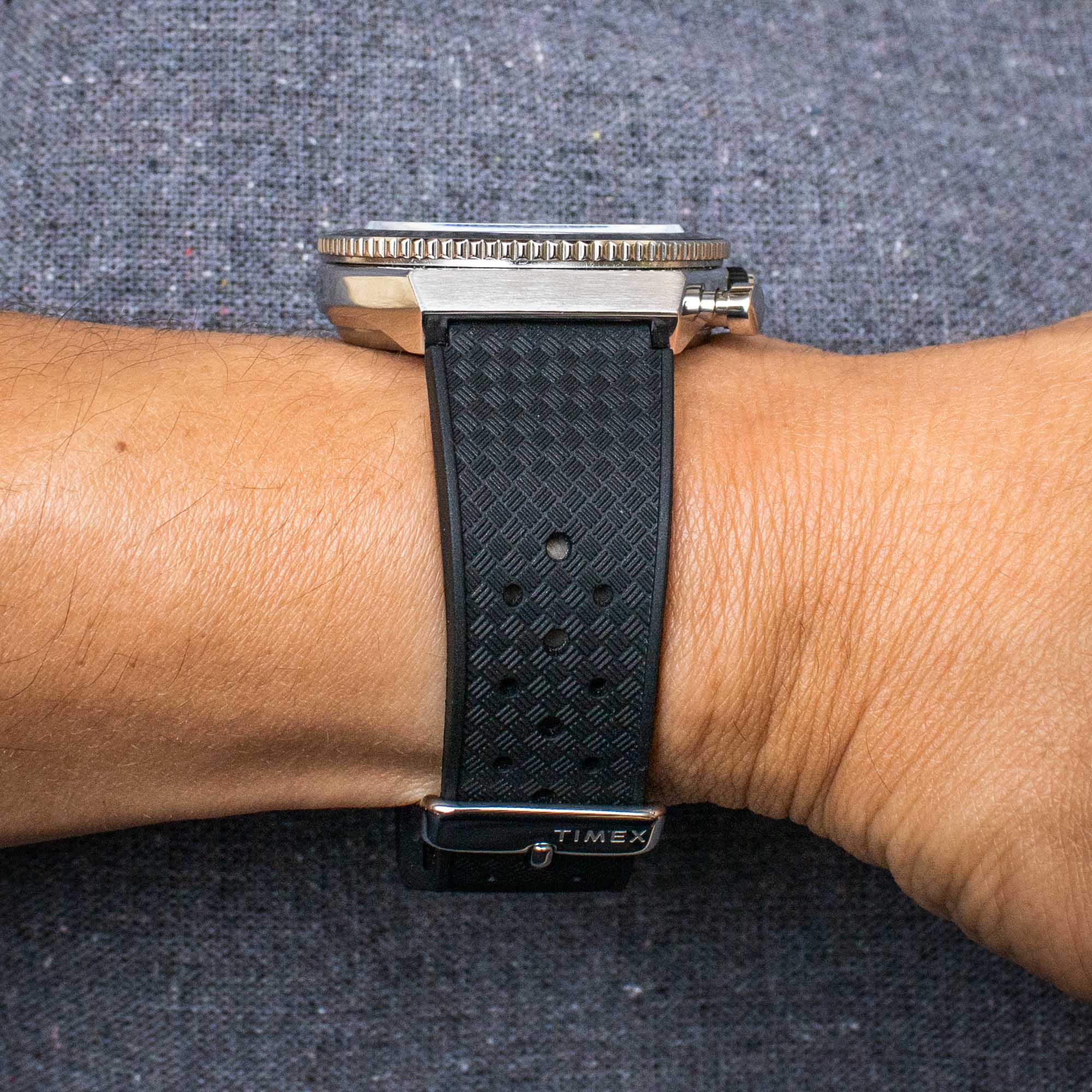
On the right side of the case is a “Q” signed crown with a rubberized ring around the side, and this is flanked by two pushers that operate the chronograph. On the top of the case surrounding the crystal is a bidirectional bezel fitted with a black and silver aluminum inset that features a 12-hour scale with a luminous pip at the 12 marker. The bezel moves smoothly in either direction without any type of ratcheting action, although since the only luminous element on it is the 12 marker, its usefulness in dark settings will be fairly limited. Additionally, since the caseback is secured by four small screws and neither the crown nor chronograph pushers screw down to the case, water resistance comes in at a fairly standard 50 meters. However, according to the information on Timex’s official website, this depth rating is suitable for “washing hands, light swimming, snorkeling, and poolside diving,” which means that you should have zero worries about wearing this watch at the beach or for a casual swim (provided that you don’t try to operate the crown or pushers while underwater).

Available with either a black, white, or online-exclusive teal dial, the specific version of the Q Timex Three Time Zone Chronograph featured here is the ref. TW2V70100VQ, which is fitted with a white dial and a black rubber strap. Between its black-finished hands, matching geometric luminous hour markers, and the red shaft on the secondary hour hand, the overall aesthetic of this version of the Q Timex Three Time Zone Chronograph has an appearance that is somewhat reminiscent of the white dial variant of the five-digit Rolex Explorer II, although it is objectively a very different watch. The black rubber strap fitted to the 18mm lugs offers a tropic-style appearance, and it slightly flares out at the case before tapering back down to 18mm where it connects to the signed stainless steel pin buckle. Since it attaches to the case with standard spring bars, you’ll need a tool to perform strap changes, although since the material used for the strap is quite soft and comfortable, I imagine that most owners will be fairly content with the included option.
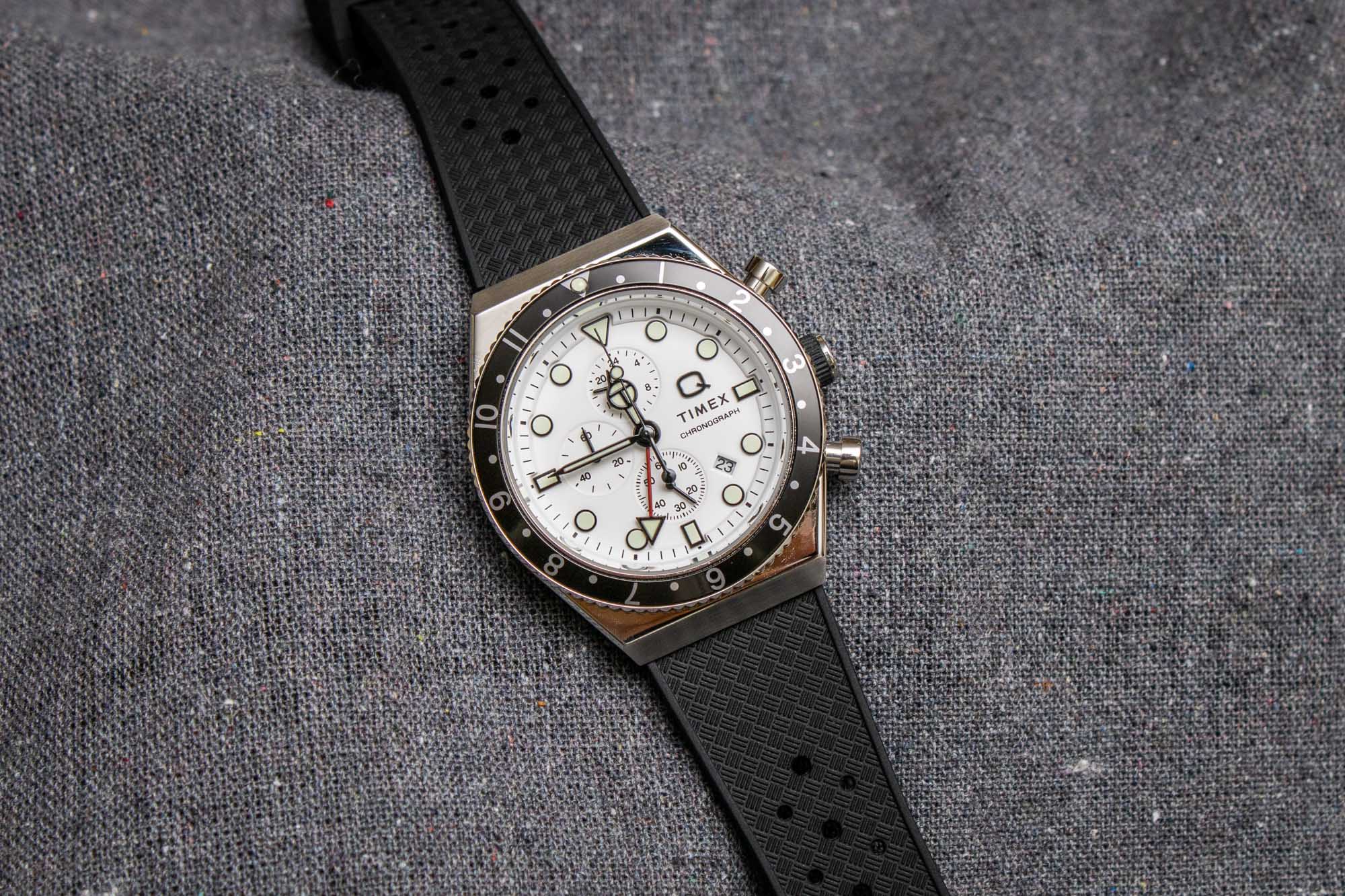
Unlike many quartz Timex models that offer the brand’s electroluminescent Indiglo technology, the Q Series skips this feature entirely and instead opts for standard green-glowing luminous material on its hands and hour markers. While the lume itself isn’t the brightest or the longest-lasting, the large size of the hour markers paired with the strong contrast of the black finished hands and indexes makes the display fairly easy to read in low-light conditions. That said, the 24-hour hand within the register at 12 o’clock doesn’t have any lume on it at all, and had it featured a luminous tip, the additional time zone display would have retained its AM/PM indicator for reference in dark settings. Since both of the two centrally-mounted hour hands use the standard indexes, no additional scales or markers are needed on the dial in order for it to be able to display its second time zone, while the 6-9-12 layout of the three registers helps create a better sense of balance with the applied “Q” logo at 3 o’clock and the date window that sits below it at the 4:30 location.
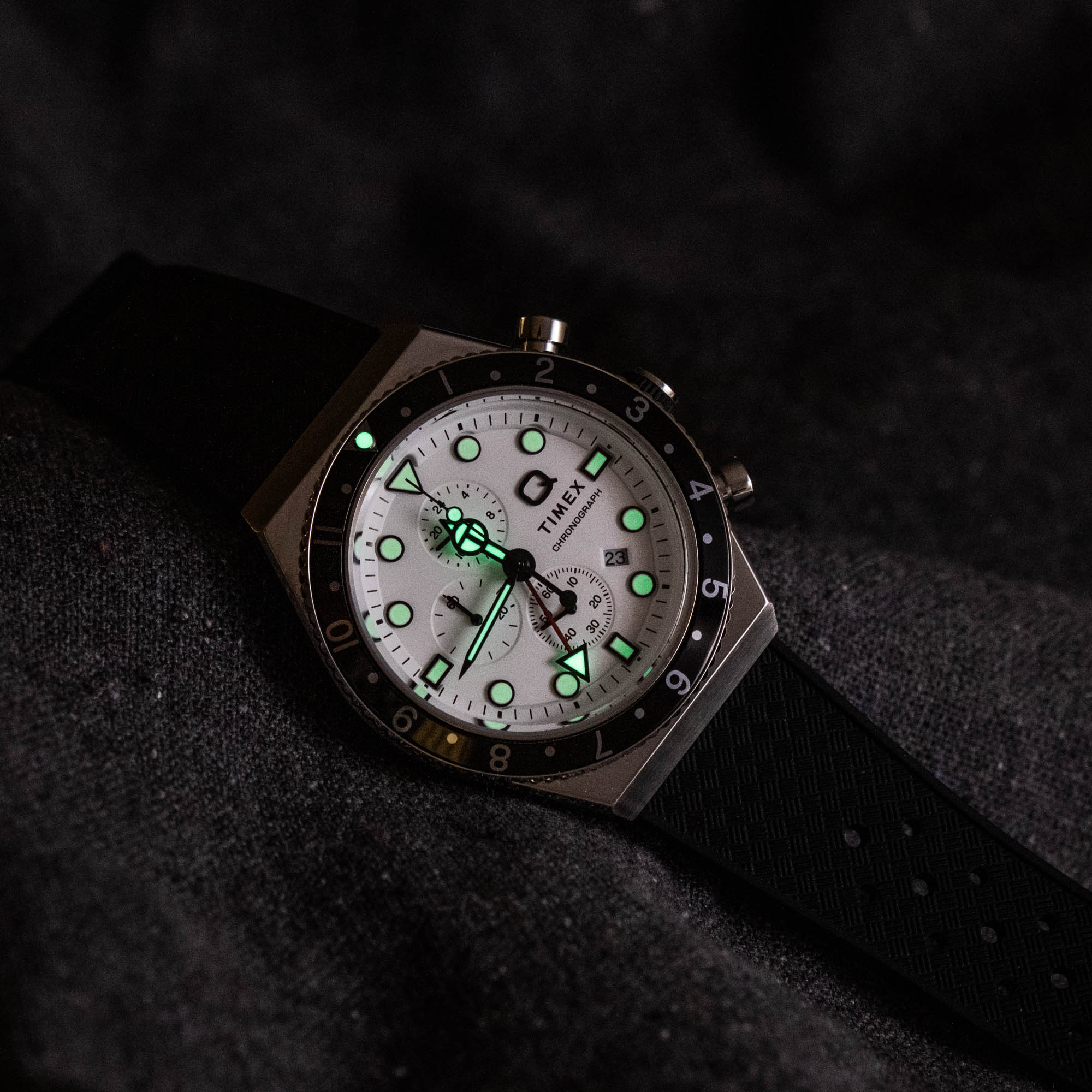
In terms of what the Q Timex Three Time Zone Chronograph offers from a functionality standpoint, what you get is a 60-minute chronograph (with a proper centrally-mounted chronograph seconds hand), a date display, and two independently adjustable 12-hour hands. The red-finished hour hand that looks like a GMT hand is permanently connected to the third sub-dial at the 12 o’clock position, and this register displays the time in a 24-hour format. Pulling out the crown to the first position and rotating it in one direction will allow you to advance the standard 12-hour hand forward in one-hour increments; however, rather than moving the hour hand backward, rotating the crown in the opposite direction instead advances the date display. Pulling out the crown one notch further (all the way out) will stop the small running seconds hand within the sub-dial at 6 o’clock, and rotating it will move all of the time-telling hands forward or backward, with both hour hands moving accordingly.
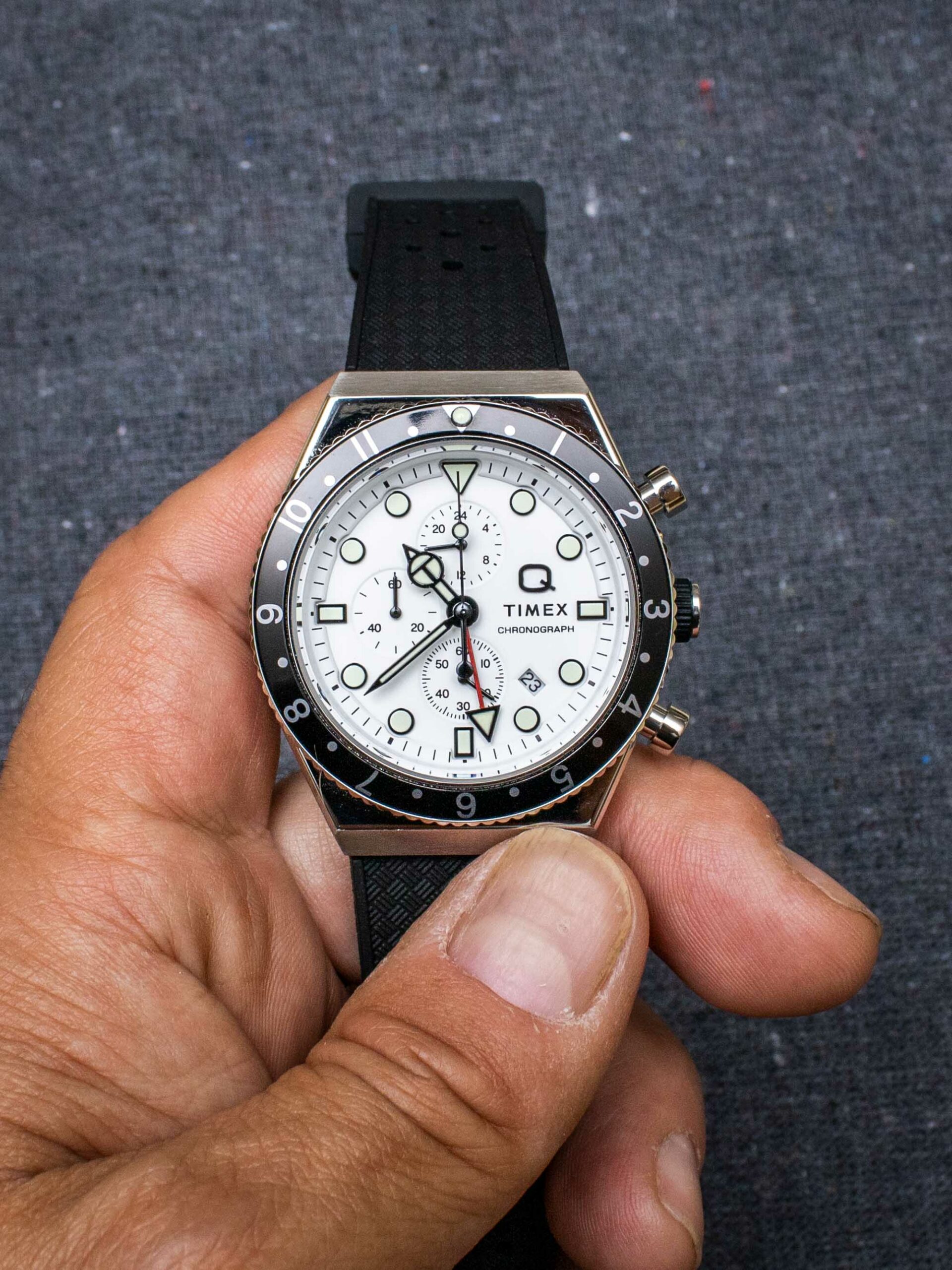
This approach for the independent adjustability of the hour hands lends itself perfectly to a watch that will frequently be used to reference multiple time zones, although not being able to move the hour hand backward is a bit of a deal-breaker when it comes to actually functioning as a travel watch. For example, resetting your watch when flying from Los Angeles to New York is as simple as just jumping the hour hand forward three positions. However, when you return from your trip and have to go backward by those same three time zones, you will need to advance the hour hand by nearly two full rotations. Additionally, after doing this, you will then need to advance the calendar disc a full 30 positions because the date will have changed over when the hour hand was jumped past midnight. Given this setting process, I would personally rather just have one of Timex’s standard chronograph watches if I am actually traveling (such as the ones that I featured in my column Actually Affordable), as they offer an hour hand that can be jumped either forward or backward, although they don’t feature any type of secondary time zone display.
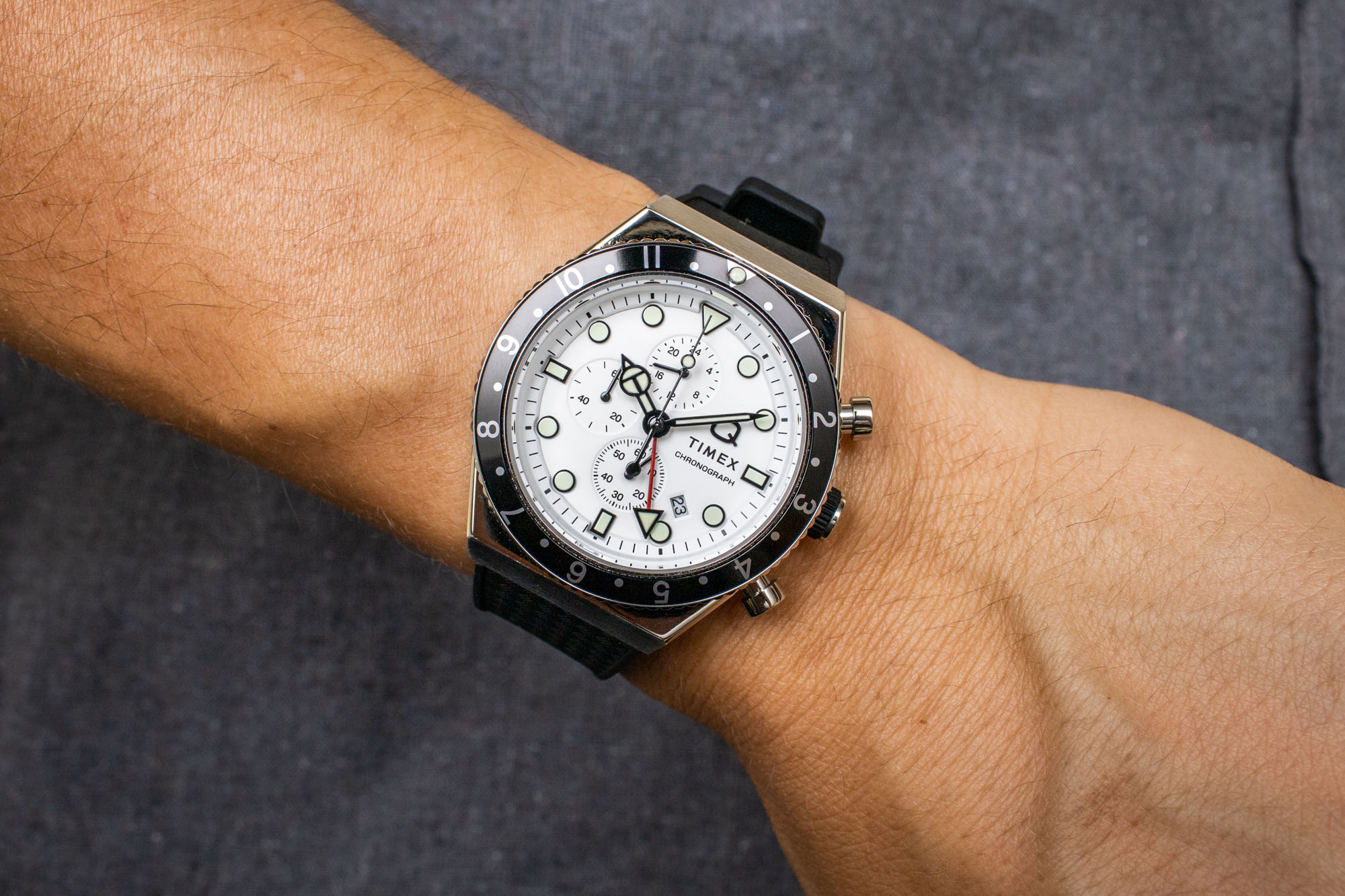
How I’ve personally found the Q Timex Three Time Zone Chronograph to be most useful is to set the red-finished hour hand to UTC time (which has its corresponding 24-hour register to serve as an AM/PM indicator), while the standard 12-hour hand is set to my local time in Los Angeles. This gives me immediate access to the two time zones that I use most frequently on a daily basis, and whenever I need to reference a third, I rotate the bezel to align with either of the two hour hands, simply depending on what is more convenient for my knowledge of that particular time zone. For example, if someone says “We’re nine hours ahead of you,” I will rotate the bezel to align with my local hour hand; however, if that person says, “We operate on +2 GMT,” I will instead move the bezel to correspond with the hour hand that is set to UTC. On a traditional GMT watch, you will always have to align the 24-hour bezel with the GMT hand, so this triple 12-hour approach lends itself particularly well to a “caller style” timepiece that will primarily stay in a single time zone but frequently be used to reference others on a daily basis.
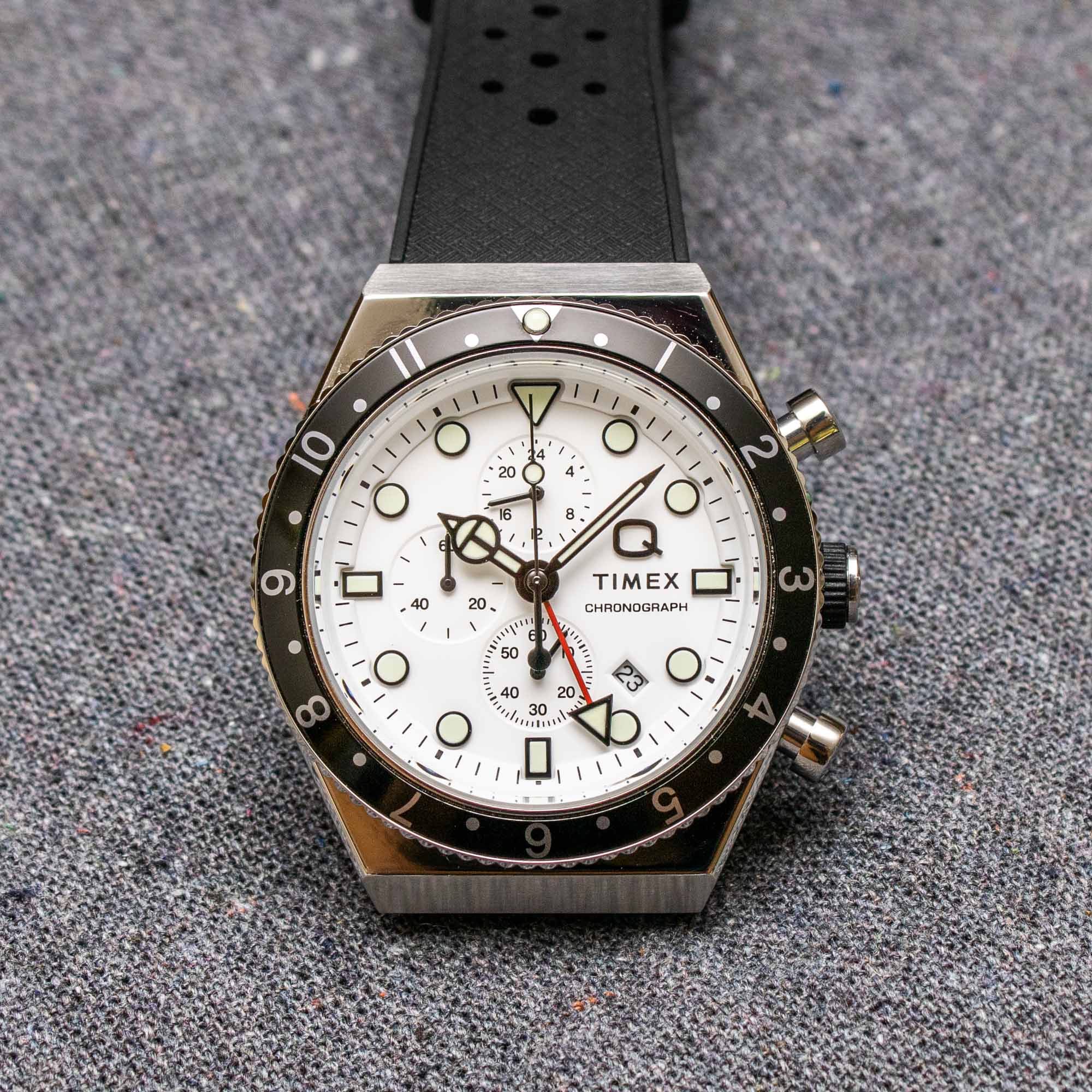
Tactile feedback from the chronograph pushers is minimal at best, and after the faint click that you feel when the chronograph is first activated, the feedback from the start/stop pusher almost disappears entirely. The reset pusher offers a similar faint click as the initial activation of the chronograph, although the mechanical feedback is a far cry from the snappy and satisfying operation of something like a mecha-quartz movement or a traditional mechanical chronograph. Similarly, tactile feedback from the crown is also largely non-existent, and after rotating it a few times, the hour hand or date will slide over one position without any type of noticeable click or sensation of mechanical feedback. Realistically speaking, expectations need to be reasonable with a watch that offers this much functionality at a price point below what some brands charge for aftermarket rubber straps, so I’m not particularly bothered by the lack of tactile feedback in this particular instance. That said, having individual minute markers for the chronograph register would have substantially made it easier to measure exact intervals of time, as the markings placed every five minutes require a brief moment of focus in order to determine the exact position of the chronograph minute hand when it is between them.

When it comes to the specific movement that is used to power the Q Timex Three Time Zone Chronograph, details from the brand are virtually non-existent, other than listing it as “quartz analog” on the company’s official website. Given the movement’s high degree of functionality and the firmly affordable nature of the watch itself, the movement is almost certainly of Asian origin, although the specific manufacturer who produces it remains unknown. While it’s always nice to be able to point to a movement from one of the major known-quantity brands, this specific configuration isn’t one of the standard options available from either Miyota or Seiko, so it’s highly possible that Timex had to look elsewhere for this particular model. The movement is powered by a single SR626SW battery, and provided that it proves to be reliable over the course of long-term ownership, I can’t imagine that there will be too many people who will be concerned over the origin of the movement given all of the features that this watch is able to offer for its price.
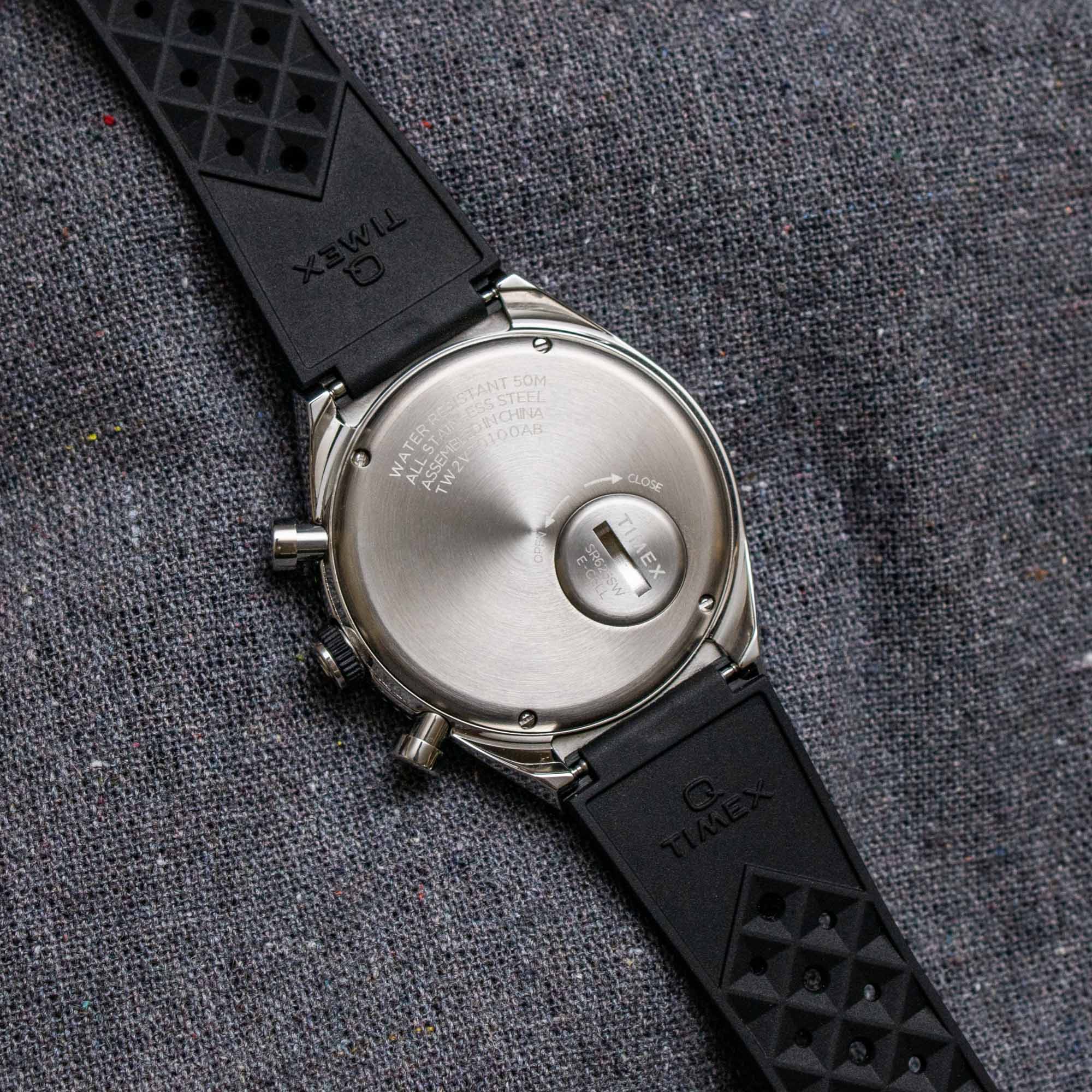
While the new Q Timex Three Time Zone Chronograph undeniably represents quite a lot of value for the money, I would have personally preferred for it to have an hour hand that could be jumped either forwards or backward, just like what can be found on the brand’s entry-level chronographs. This slight alteration in the approach of the two independently adjustable hour hands would have significantly expanded the model’s functionality as a travel watch, while still enabling it to offer the same triple 12-hour layout. Given the slightly cumbersome process that’s involved with setting the hour hand backward, most other types of watches would actually be more convenient when it comes to rapidly navigating between time zones, although the Q Timex Three Time Zone Chronograph really excels most at being used within a single location, while simultaneously offering immediate access to the time in two other destinations.
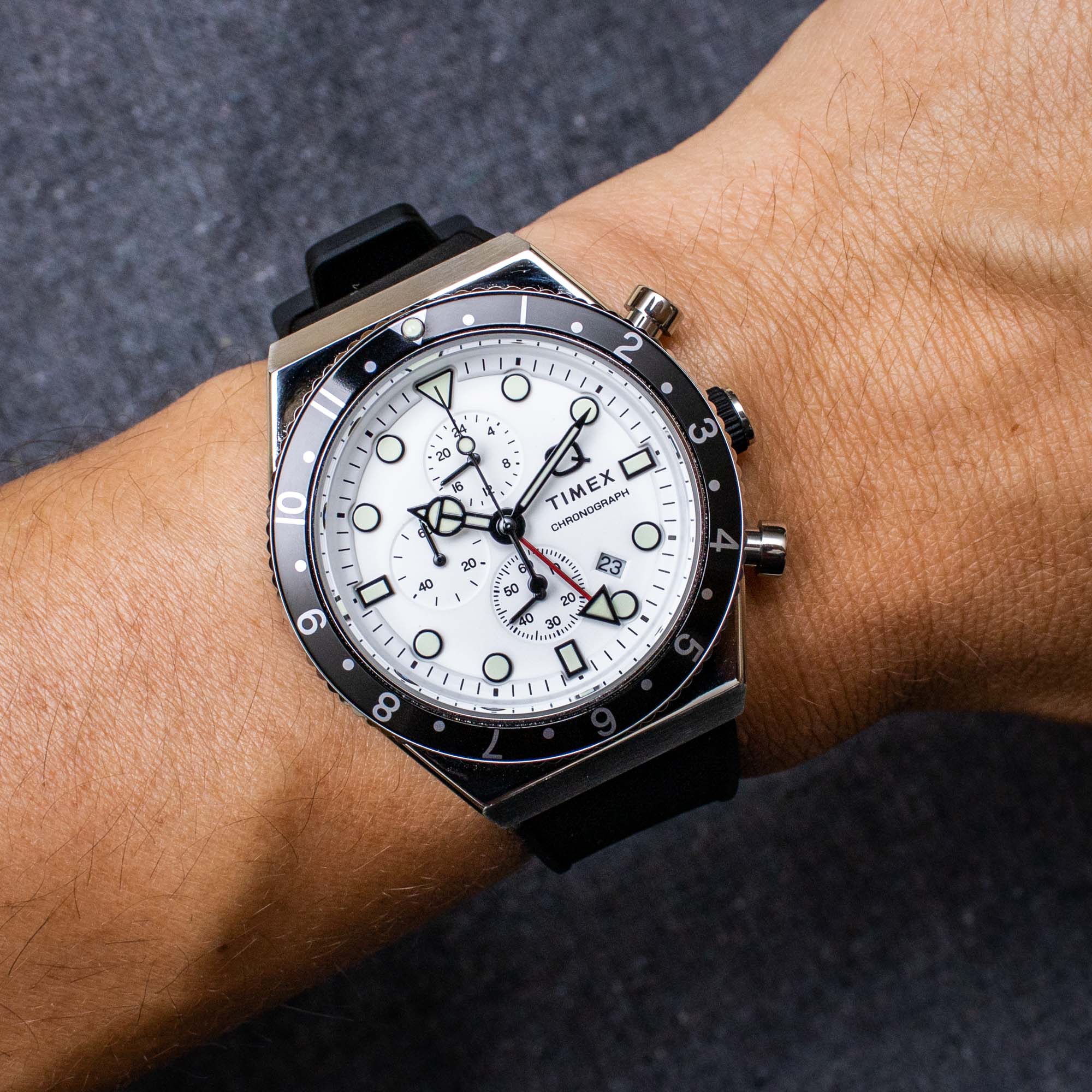
While the new Q Timex Three Time Zone Chronograph may not be the perfect travel watch, that detail should not detract from the fact that it still offers quite a lot for its budget-friendly price. In addition to a significant amount of functionality, the Q Series also benefits from superior materials (e.g., stainless steel vs. plated brass cases), along with a higher level of build quality compared to Timex’s entry-level models. Additionally, with an official retail price of $219 USD (add $20 if you want the version on a stainless steel bracelet), the new Q Timex Three Time Zone Chronograph is less expensive than a modern Seiko 5, and it is even priced below what you will pay for a MoonSwatch, which places it firmly in the affordable category within the greater enthusiast landscape. Even when you compare the new Three Time Zone Chronograph to other Q Timex models, it still represents a rather compelling value proposition, as it costs just $30 more than the standard quartz three-handed models, and the exact same as what the brand charges for the four-handed GMT versions from the Q Series. For more information on the Q Timex Three Time Zone Chronograph, please visit the brand’s website.

